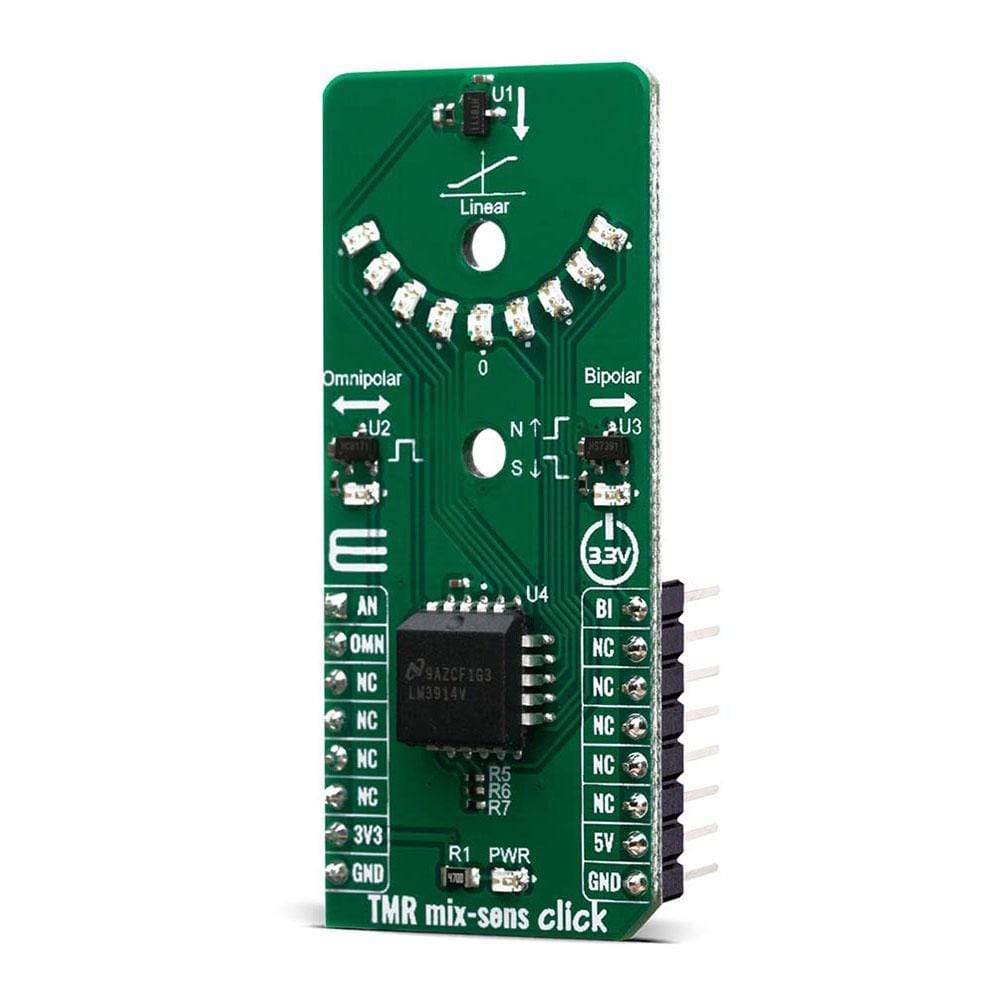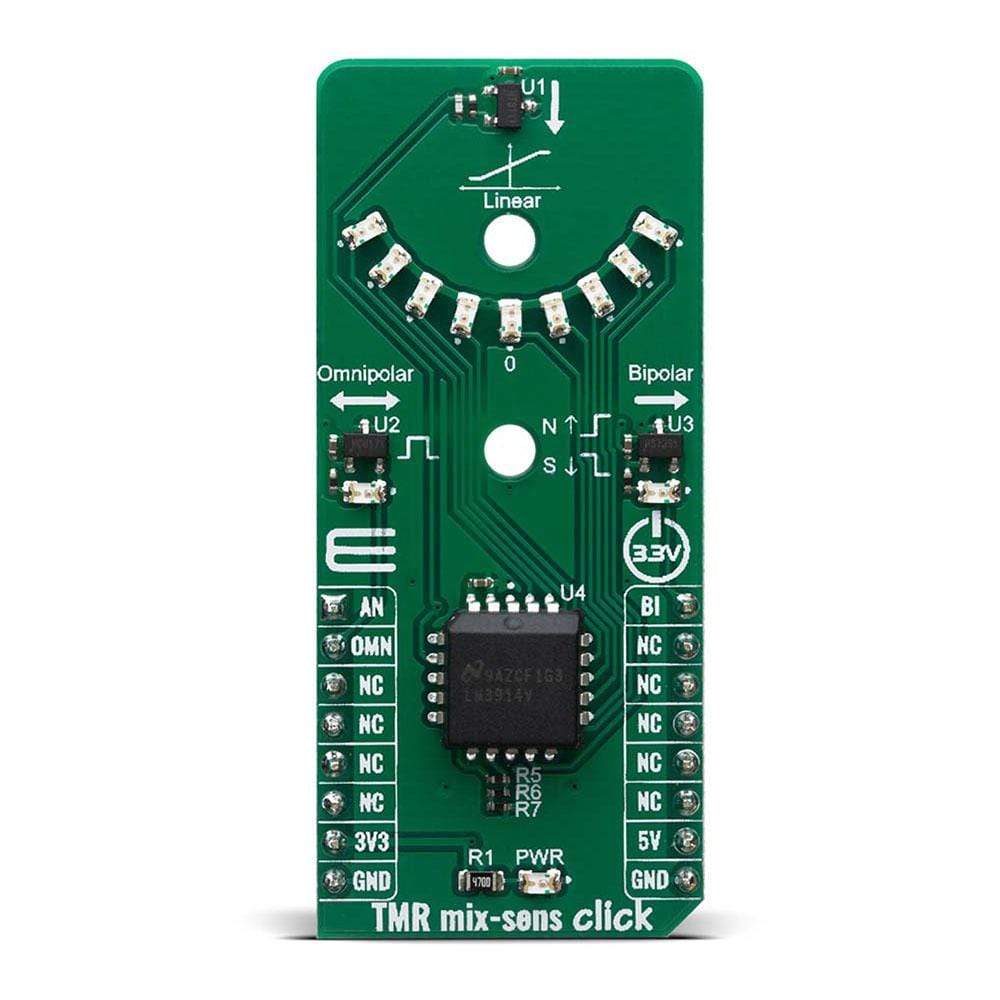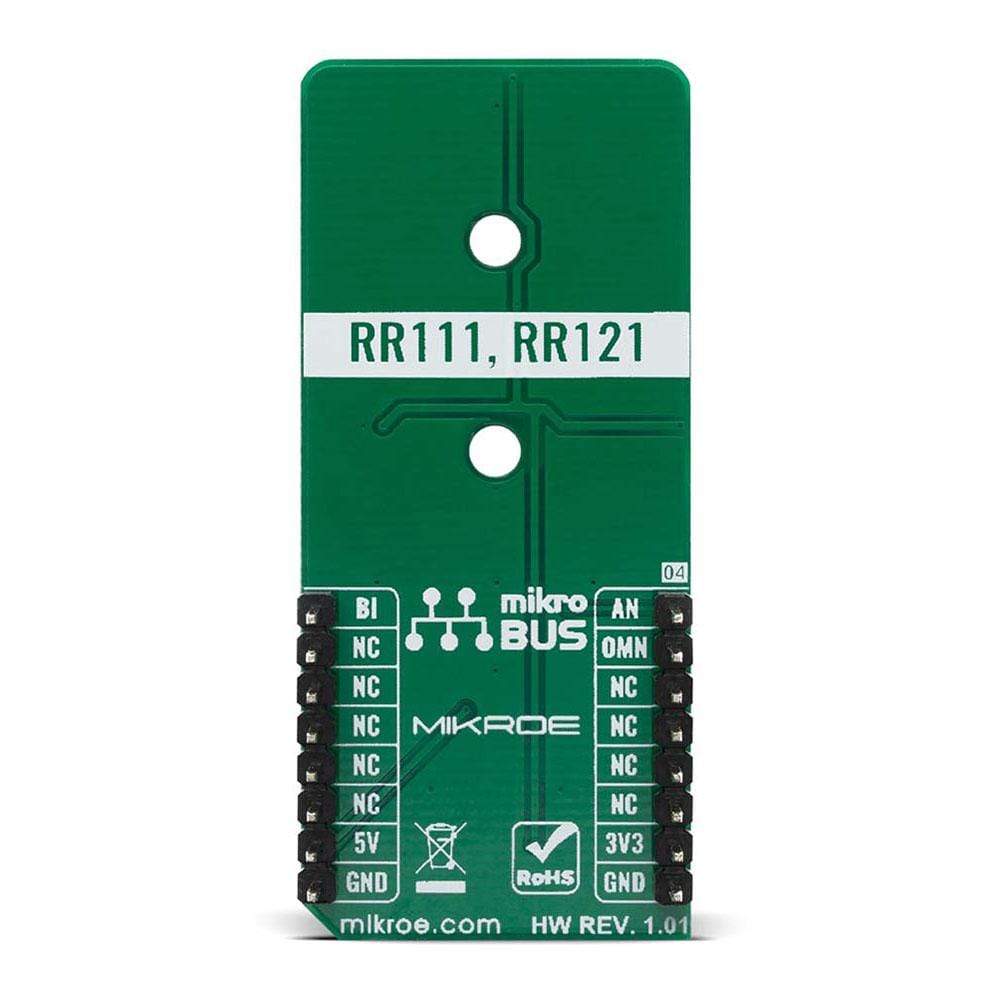


Overview
The TMR mix-sens Click Board™ is equipped with the TMR digital push-pull and analogue magnetic sensors, as well as the intensity of the magnetic field indicator. The TMR mix-sens Click Board™ has three types of magnetic field sensors: Two digital and one analogue sensor. The digital sensors are the RR121-1A23-311 which has an omnipolar polarity response, and the RR121-3C63-311 which has a bipolar polarity response. The analogue sensor is the RR111-1DC2-331, which outputs a voltage that is proportional to the magnetic field. The board also has an LM3914 voltage level indicator, which takes the output voltage of the RR111-1DC2-331 sensor and uses it to light a series of LEDs to indicate the level of magnetic field seen by the sensor. All sensor outputs can be accessed through mikroBUS I/O or analogue pins, also they are visually represented over onboard LED's. This board can be used for evaluation of the TMR sensors as well as for testing applications which are requiring low power wake up functionality.
The TMR mix-sens Click Board™ is supported by a mikroSDK compliant library, which includes functions that simplify software development. This Click Board™ comes as a fully tested product, ready to be used on a system equipped with the mikroBUS™ socket.
Downloads
Das TMR Mix-Sens Click Board™ ist mit den digitalen TMR-Push-Pull- und analogen Magnetsensoren sowie der Intensitätsanzeige des Magnetfelds ausgestattet. Das TMR Mix-Sens Click Board™ verfügt über drei Arten von Magnetfeldsensoren: zwei digitale und einen analogen Sensor. Die digitalen Sensoren sind der RR121-1A23-311 mit omnipolarer Polaritätsreaktion und der RR121-3C63-311 mit bipolarer Polaritätsreaktion. Der analoge Sensor ist der RR111-1DC2-331, der eine Spannung ausgibt, die proportional zum Magnetfeld ist. Die Platine verfügt außerdem über eine Spannungspegelanzeige LM3914, die die Ausgangsspannung des RR111-1DC2-331-Sensors aufnimmt und damit eine Reihe von LEDs zum Leuchten bringt, um die Stärke des vom Sensor wahrgenommenen Magnetfelds anzuzeigen. Auf alle Sensorausgänge kann über MikroBUS-E/A oder analoge Pins zugegriffen werden, außerdem werden sie visuell über integrierte LEDs dargestellt. Diese Platine kann zur Evaluierung der TMR-Sensoren sowie zum Testen von Anwendungen verwendet werden, die eine Weckfunktion mit geringem Stromverbrauch erfordern.
Das TMR Mix-Sens Click Board™ wird von einer mikroSDK-kompatiblen Bibliothek unterstützt, die Funktionen enthält, die die Softwareentwicklung vereinfachen. Dieses Click Board™ wird als vollständig getestetes Produkt geliefert und ist bereit für den Einsatz auf einem System, das mit der mikroBUS™-Buchse ausgestattet ist.
| General Information | |
|---|---|
Part Number (SKU) |
MIKROE-4106
|
Manufacturer |
|
| Physical and Mechanical | |
Weight |
0.02 kg
|
| Other | |
Country of Origin |
|
HS Code Customs Tariff code
|
|
EAN |
8606018717392
|
Warranty |
|
Frequently Asked Questions
Have a Question?
Be the first to ask a question about this.



